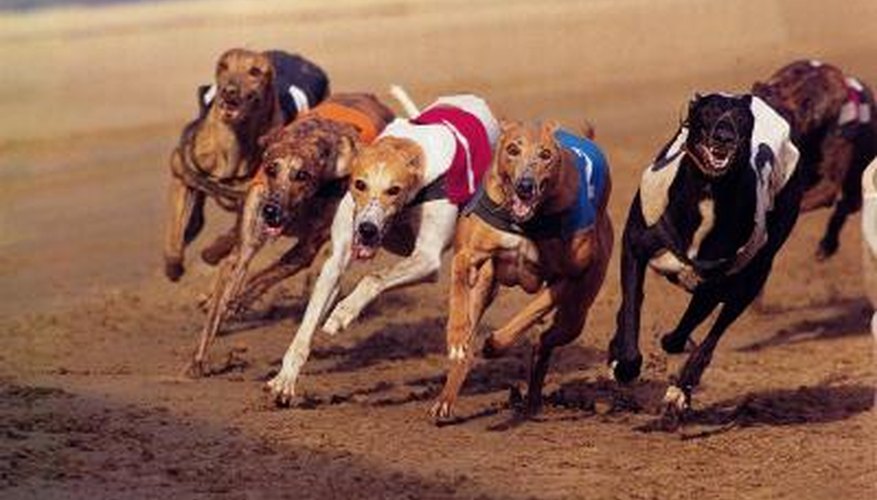It is a common misconception that greyhounds bred for racing are healthy and well taken care of. In reality, this is not typically the case. During a greyhound's racing career, exposure to a variety of hazards, not common in other breeds, reduces their quality of life. Exposure to a variety of diseases occurs in greyhounds more than other breeds due to travelling to various parts of the country. Dark spots on their skin may be a clue.
Travel
Abusive owners and trainers, poor diet, unsanitary living conditions and exposure to environmental and infectious diseases often accompany a travelling work dog. Signs of disease may not show up until a greyhound finishes racing and is adopted by a loving family. If you adopted a retired greyhound, the veterinarian in your area may not be familiar with some of the places your dog has been, thus may not consider exposure to diseases not common in your area. When adopting a greyhound, obtain the dog's travel history, treatment, living conditions and medical history if possible.
- Abusive owners and trainers, poor diet, unsanitary living conditions and exposure to environmental and infectious diseases often accompany a travelling work dog.
- If you adopted a retired greyhound, the veterinarian in your area may not be familiar with some of the places your dog has been, thus may not consider exposure to diseases not common in your area.
Alabama Rot
Alabama rot is most common in Southern California, Arizona and southwest Texas, and less common in New Mexico, Nevada and Utah. This disease is an intestinal disorder caused by inhaling a soil-borne fungus. This disease only affects greyhounds, probably because of toxins produced by bacteria are found in the raw meat of a racer's diet. The earliest sign of this disease is reddened, crusty ulcer-like skin lesions on the hocks, stifles, thighs, front legs, chest or abdomen.
- Alabama rot is most common in Southern California, Arizona and southwest Texas, and less common in New Mexico, Nevada and Utah.
- This disease only affects greyhounds, probably because of toxins produced by bacteria are found in the raw meat of a racer's diet.
Ventral Comedo Syndrome
Ventral comedo syndrome appears as spots, similar to human blackheads, on the deep chest of the greyhound due to friction between the chest and abrasive materials on dirty bedding. This condition is not a problem for the dog, but may be an appearance concern for the owner.
Hyperthyroidism
Drugs administered to racing greyhounds include corticosteroids that suppress the immune system. Testosterone given to female racing greyhounds to prevent heat cycles may influence thyroid function. Various symptoms of hyperthyroidism include dark spots and thick scales on the skin.
Thrombocytopenia
Thrombocytoopenia is a reduction of blood platelets that results in bleeding into the skin. Bleeding into the skin, referred to as spontaneous bruising, may result in prolonged bleeding from surgery or injury. Greyhounds have a much lower white blood cell count than other breeds. Make your veterinarian aware of this when performing blood-work.
- Thrombocytoopenia is a reduction of blood platelets that results in bleeding into the skin.
